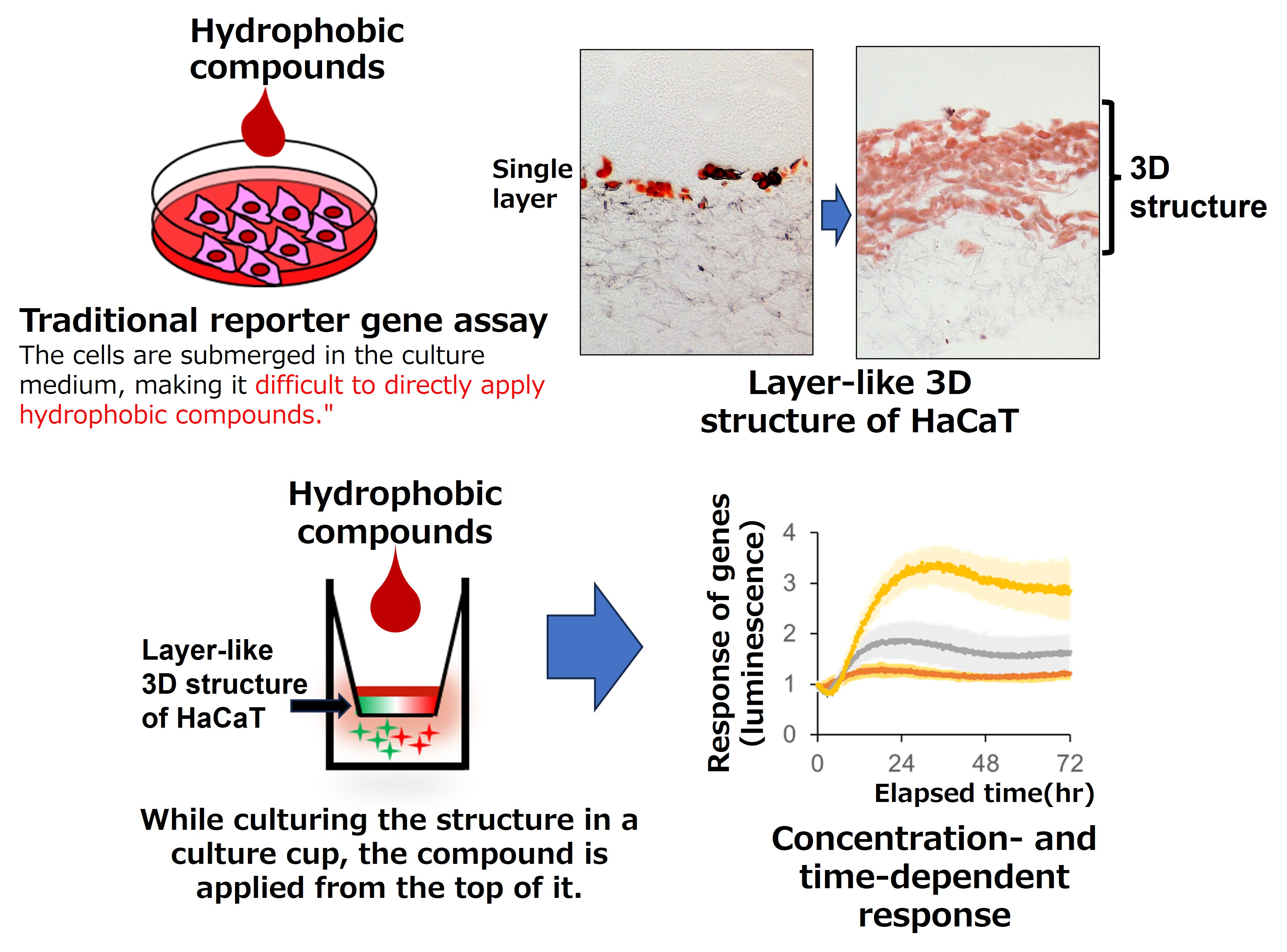A three-dimensional structure of epidermal cells stably expressing a reporter.
Tatsunosuke Tomita and his research collaborators have developed a new assay method using the normal epidermal cell line HaCaT, enabling the evaluation of the effects of a wide range of compounds, including hydrophobic ones, on the skin, that has been challenging with traditional reporter gene assay methods. They cultured HaCaT cells, which stably express the reporter gene, into a layered 3D structure resembling normal epidermis. Compounds were then applied to the top of this structure, and the gene response was measured over time in living cells. In this study, IL-8, a marker of inflammation, was selected as the gene of interest. When multiple compounds, including known inflammatory hydrophobic compounds, were applied, a satisfactory response was observed. By appropriately selecting target genes, it is expected that various biological responses, beyond just inflammation, can be monitored. As animal testing for skin-related research is increasingly being banned worldwide, this assay format is anticipated to provide a new alternative.
This research was conducted with the advice and discussions of cosmetic companies.
By layering HaCaT cells and applying test compounds from above the structure, we made it possible to assay various compounds, including hydrophobic ones, which were previously difficult to test.

Publication
- Title: Novel three-dimensional live skin-like in vitro composite for bioluminescence reporter gene assay
- Authors: Tomita, T; Nakajima, Y; Ohmiya, Y; Miyazaki, K
- Journal: FEBS Journal
- DOI: 10.1111/febs.17246